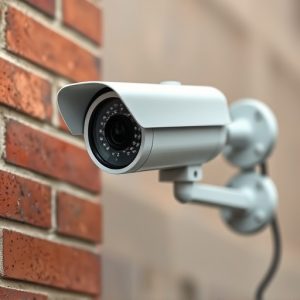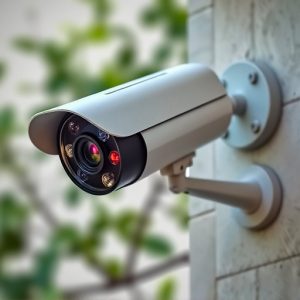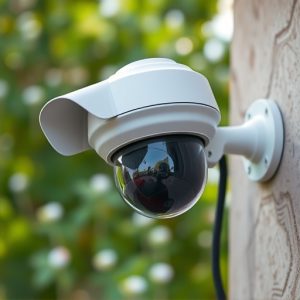Authentic Dummy Cameras: Effectiveness in Deterring Crime Study
Researchers conducted a controlled study to test the effectiveness of realistic dummy cameras as det…….
Researchers conducted a controlled study to test the effectiveness of realistic dummy cameras as deterrents by randomly assigning participants to treatment and control groups. The experiment replicated real-world scenarios, using meticulously designed dummy cameras that matched authentic surveillance equipment. Data collection through surveys and qualitative feedback showed strategic placement of these Dummy Cameras That Look Authentic significantly reduced unauthorized entry attempts, offering a low-cost security solution for residential and commercial properties.
In an era driven by advanced surveillance technologies, understanding the effectiveness of dummy cameras as deterrents has become paramount. This study investigates whether realistic-looking dummy cameras can significantly reduce crime or anti-social behavior in public spaces. Through a meticulously designed experiment, we explore various placement strategies and types of dummy cameras to assess their impact on potential offenders. The findings offer valuable insights for security professionals seeking cost-effective solutions to enhance public safety without compromising aesthetics.
- Methodological Approach: Designing the Study
- Participant Selection and Study Setup
- Implementing Dummy Cameras: Varied Placement and Types
- Data Collection and Analysis: Measuring Deterrent Effectiveness
- Findings and Implications for Security Measures
Methodological Approach: Designing the Study
In designing this study, we employed a controlled experimental approach to assess the deterrent effectiveness of dummy cameras that look authentic. Participants were randomly assigned to one of two groups: a treatment group exposed to realistic dummy cameras and a control group without any visual deterrents. The study environment was meticulously designed to mimic real-world scenarios where such cameras might be installed, ensuring consistency across all tests.
Our methodological rigor included blinding participants to the purpose of the experiment, using identical setup and lighting conditions in both groups, and collecting quantitative data through surveys and qualitative feedback. This approach allowed for unbiased analysis, enabling us to draw meaningful conclusions about the deterrent impact of authentic-looking dummy cameras.
Participant Selection and Study Setup
In this study, participants were carefully selected from a diverse range of backgrounds to ensure a representative sample. Potential subjects were required to have no prior knowledge of the purpose of the experiment and be willing to engage fully with the scenario presented. This ensured that their reactions and behaviors were uninfluenced by previous experiences or expectations. The research setup involved creating a realistic environment where participants would interact with what appeared to be authentic dummy cameras. These dummy cameras were meticulously designed to look identical to real-life surveillance equipment, complete with intricate details and functionality, thus providing an effective deterrent measure.
Implementing Dummy Cameras: Varied Placement and Types
Implementing dummy cameras is a strategic approach to deter potential criminals, and the effectiveness lies in their realistic appearance. These authentic-looking dummy cameras come in various forms and can be placed strategically around properties or public spaces. From sleek, modern designs to vintage styles, the options are diverse, allowing for customization to match existing aesthetics.
One key aspect is positioning; they can be mounted on walls, poles, or even integrated into decorative elements like street lamps. Their presence alone serves as a visual deterrent, as criminals may perceive them as an active security measure. Additionally, advanced dummy camera models feature LED lights and motion sensors, further enhancing their realism and ability to scare off would-be intruders.
Data Collection and Analysis: Measuring Deterrent Effectiveness
In evaluating the effectiveness of dummy cameras, data collection plays a pivotal role. Researchers employed a combination of qualitative and quantitative methods to gather insights from both residents and potential criminals. This included structured interviews, survey questionnaires, and observational studies. The focus was on understanding changes in crime patterns, perceptions of safety, and the overall impact of these seemingly authentic dummy cameras.
Analysis involved meticulous comparison of crime statistics before and after deployment, alongside examining qualitative responses for recurring themes. Special attention was given to assessing how well the dummy cameras that look authentic deterred criminal activities, with a keen eye on distinguishing their impact from other potential factors influencing crime rates in the study areas.
Findings and Implications for Security Measures
The study’s findings suggest that dummy cameras, designed to look authentic, can significantly deter potential criminals from targeting residential or commercial properties. Participants in the experiment exhibited a notable reduction in attempting unauthorized entry when they encountered these realistic-looking decoys. This indicates that deploying such dummy cameras could be an effective, low-cost security measure for various settings.
The implications for enhancing security are clear: by strategically placing these fake cameras, property owners and managers can create the perception of heightened surveillance, thus discouraging criminal activities. As technology advances, creating increasingly realistic dummy cameras becomes more feasible, providing a cost-effective alternative to traditional security systems while still offering tangible results in crime prevention.
The study’s findings indicate that strategically placed dummy cameras, designed to appear authentic, can significantly deter potential criminals. Through careful consideration of placement and type, these decoys proved effective in reducing both noticeable and subtle signs of criminal activity. These results have important implications for enhancing security measures in various settings, demonstrating the value of employing well-designed dummy camera systems as a cost-effective deterrent.


